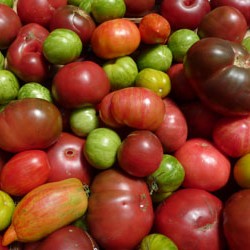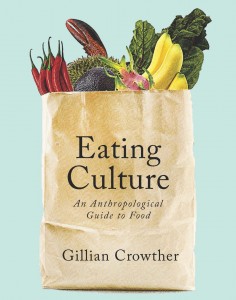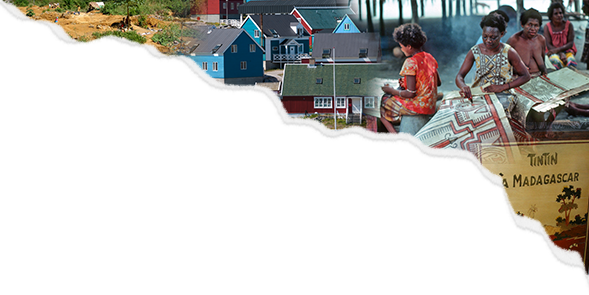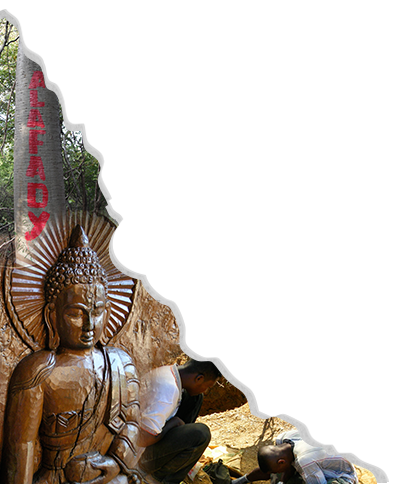
We are very excited about the imminent release of Gillian Crowther’s new book, Eating Culture: An Anthropological Guide to Food. In advance of its publication, we would like to share this short interview with the author, in which she describes her inspiration for writing the book, her approach to teaching her own anthropology of food course, and what she enjoys most about teaching. In the coming days, we will share some great photos (of food!) that Gillian provided for the book @TeachingCulture.
TC: What inspired you to write Eating Culture?
GC: As with many people I have long been fascinated by food. My mum was a cookery teacher and my dad was a chemist who made Cheddar cheese, so my upbringing centred around food, cooking, and eating. Through my anthropological studies I had the opportunity to begin to understand our relationship with food, such as its social and cultural marking abilities, and as an undergraduate one faculty member used to take interested students out to a wide variety of restaurants in London… this whet my appetite for a more sustained examination of the subject. Food is one aspect of culture that provides a chance to actually taste another’s perception of the world—this is exciting! It was only after fieldwork and when I began teaching that food scholarship really took off, and the book became an opportunity to explore my interests and those of other researchers.
TC: What is your favourite part of the book?
 GC: I really enjoyed writing the vignettes at the beginning of each chapter, which draw upon my food experiences, but also provide an example of how we can all reflect on what and how we eat. I hope these spark people’s memories, which food is really good at doing, and allow the rest of the chapter to lend some insight into what we can make of food traditions from a cross-cultural perspective. The photographs were also instrumental to thinking through food, and I know many people take pictures of what they eat, so again it would be nice to provide some anthropological insight to chew on when looking at the images.
GC: I really enjoyed writing the vignettes at the beginning of each chapter, which draw upon my food experiences, but also provide an example of how we can all reflect on what and how we eat. I hope these spark people’s memories, which food is really good at doing, and allow the rest of the chapter to lend some insight into what we can make of food traditions from a cross-cultural perspective. The photographs were also instrumental to thinking through food, and I know many people take pictures of what they eat, so again it would be nice to provide some anthropological insight to chew on when looking at the images.
TC: How do you see this book being used in the classroom? Is there anything unique about it that would be particularly helpful to those teaching undergraduate anthropology?
GC: In the anthropology of food course I teach I wanted to spend more time engaging the students in the current public discussions of food—the discourses that surround our daily eating practices about nutrition, culinary skills, gastronomy, and sustainability—and so providing a broad-based background text would help us focus on the present context. I would say the focus on food offers a unique opportunity to engage students since we all have opinions about this subject matter, and it allows the showcasing of some of brilliant anthropological research and the discipline’s depth, vitality, and accessibility when applied to something we all experience.
TC: What are your favourite courses to teach?
GC: I am very lucky to teach courses in introductory social anthropology, the anthropology of religion, Indigenous peoples of North America, First Nations of British Columbia, visual anthropology, anthropology of material culture, and the anthropology of food—and all of these are favoured—but food is definitely the tastiest offering!
TC: What do you enjoy the most about teaching anthropology, and what do you find the most challenging?
GC: I enjoy expanding students’ minds to entertain new ways of doing the things we take for granted—to realize, for instance, that there are different ways of classifying the world, of determining who are family, how marriage operates, and what and when we eat. I hope this affords an attitude of wonder and respect, laced with a critical appraisal of the serious issues surrounding human culture and our global society. The most challenging is to get to the point where people are not afraid to open their minds to the range of possibilities presented by cultures, and to begin to unravel any lingering stereotypes they may harbour.
TC: How would you describe your approach to teaching?
GC: I hope my enthusiasm for the material helps draw students out of their worlds and into the worlds of others, while we look over our shoulders at what we call culture. As part of this I like to use assignments that challenge the students to apply what they learn to their own lives, and I try to model this through drawing on my anthropological interests and personal experiences, and the richness of other anthropologists’ work. I try to present an optimistic outlook without skirting over the very pressing details of global inequities, change, conflicts, and environmental and social justice issues that are pertinent to everyone, everywhere.



